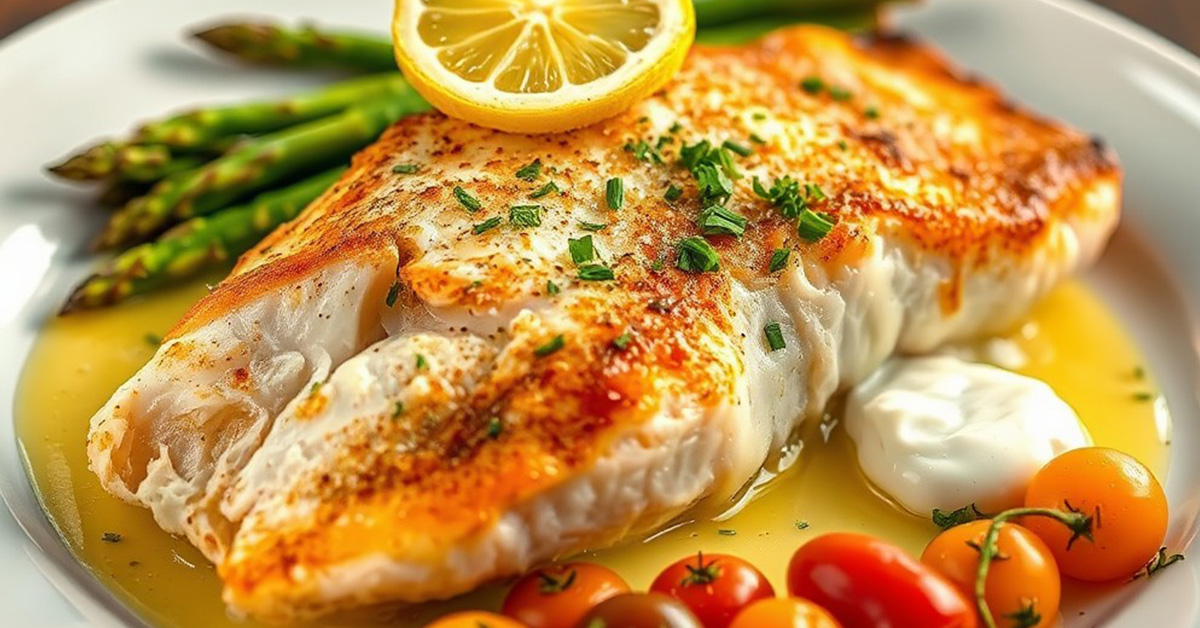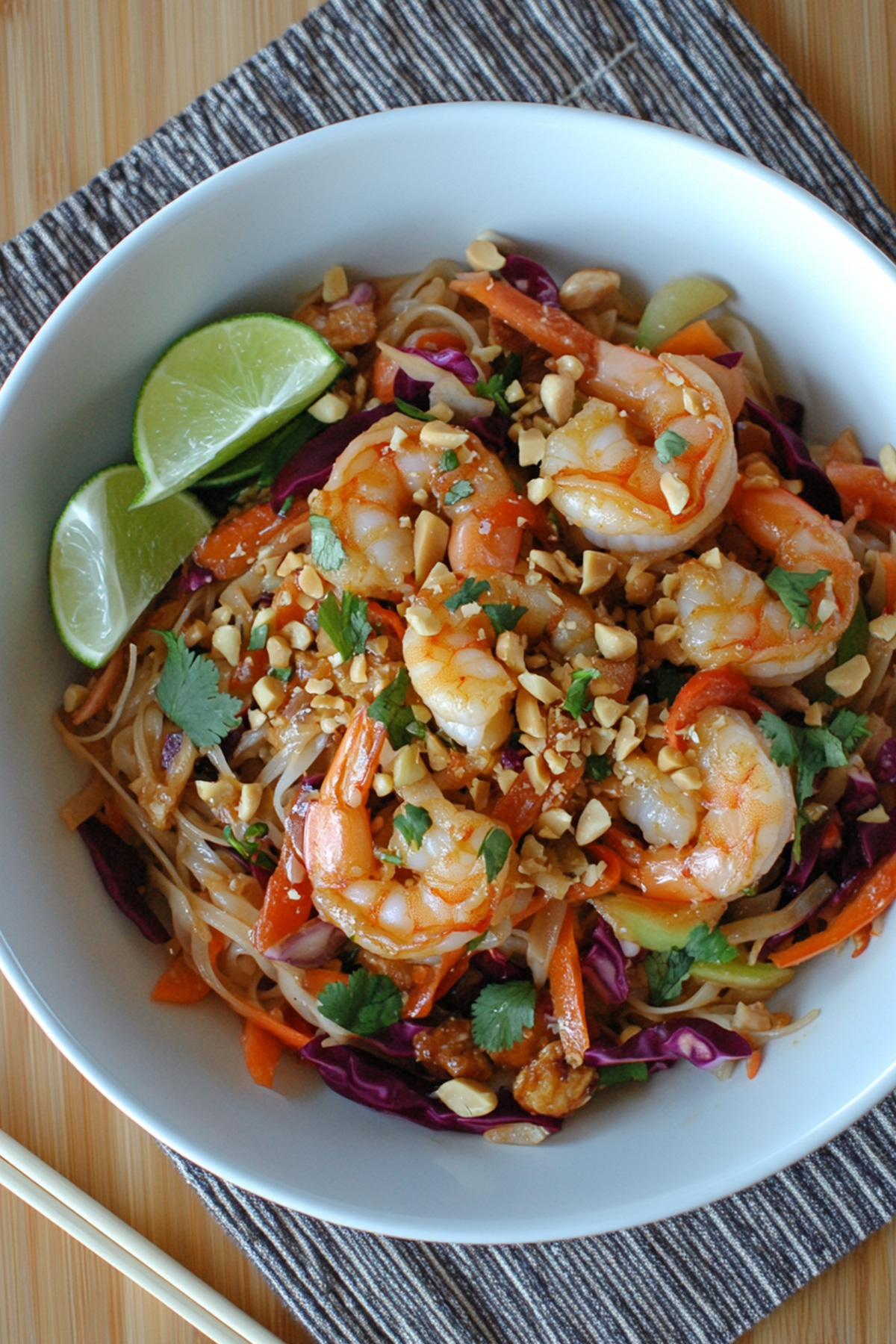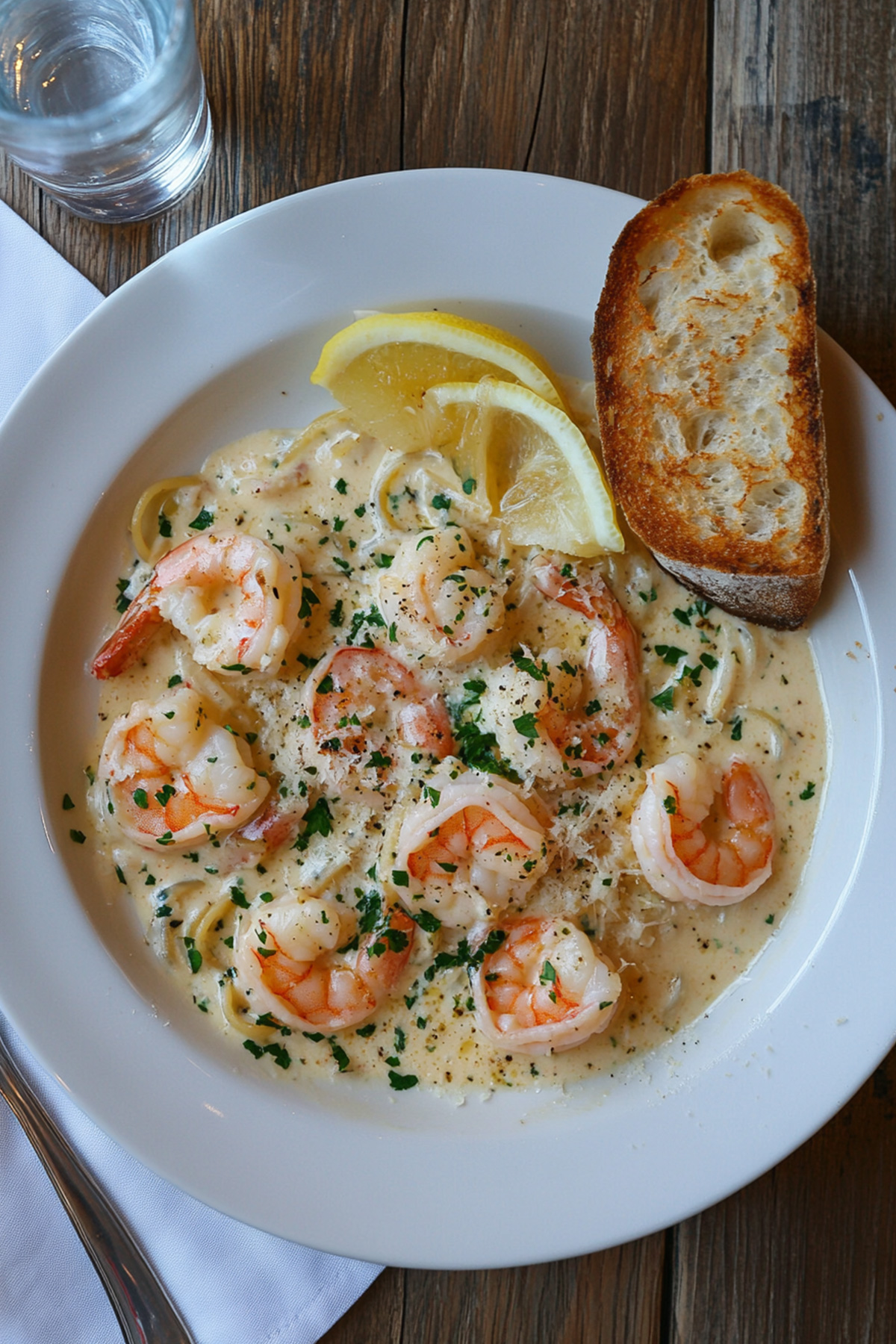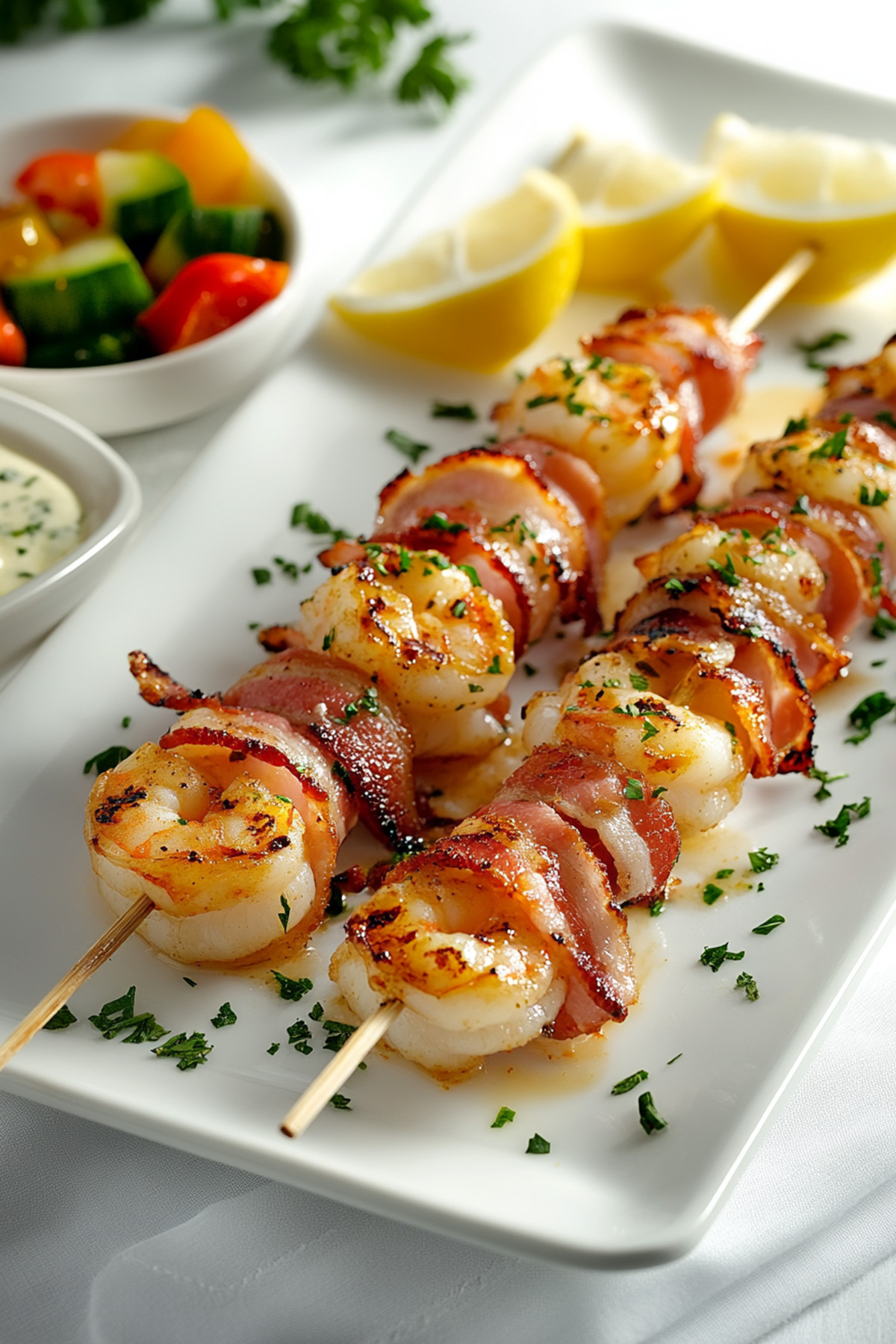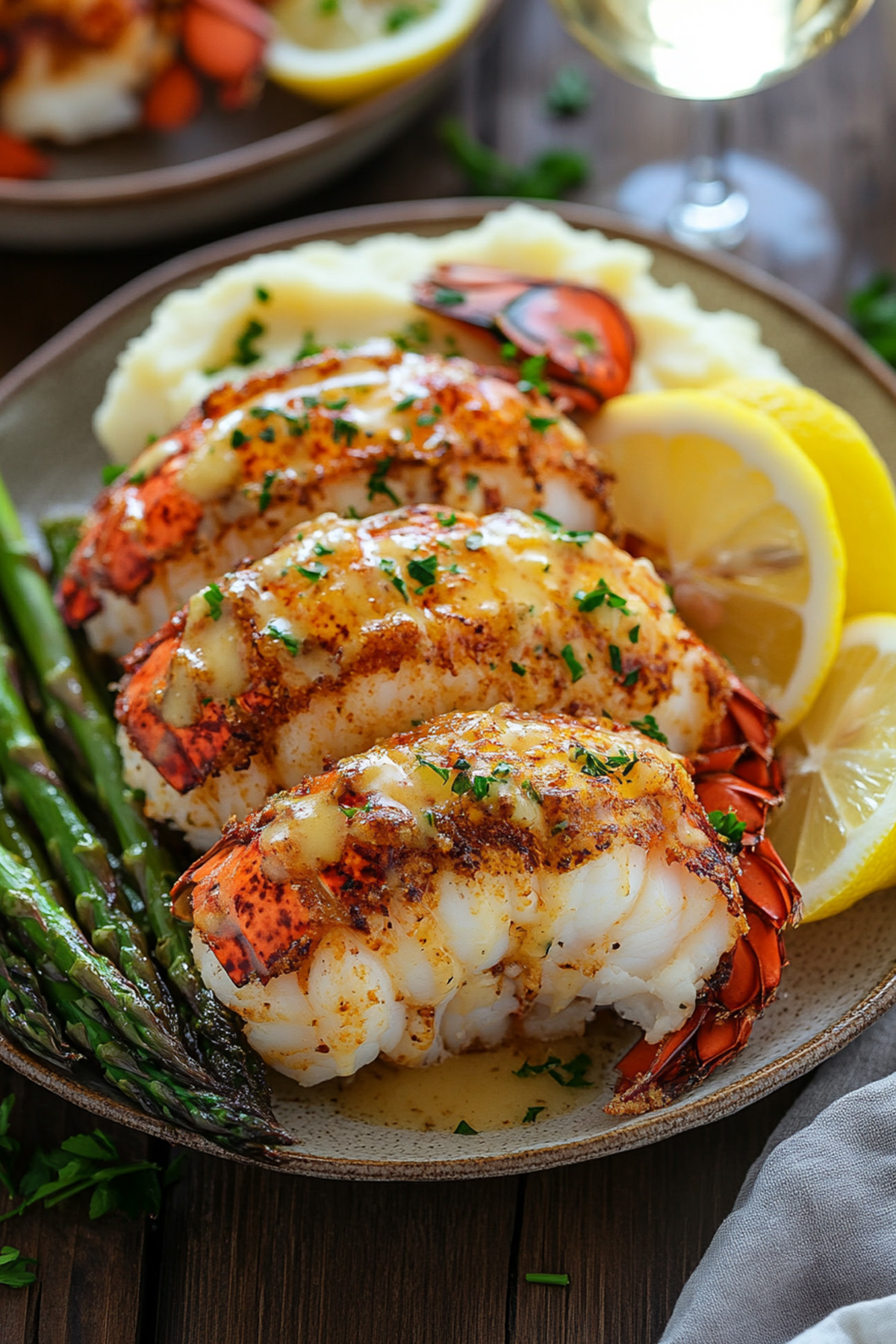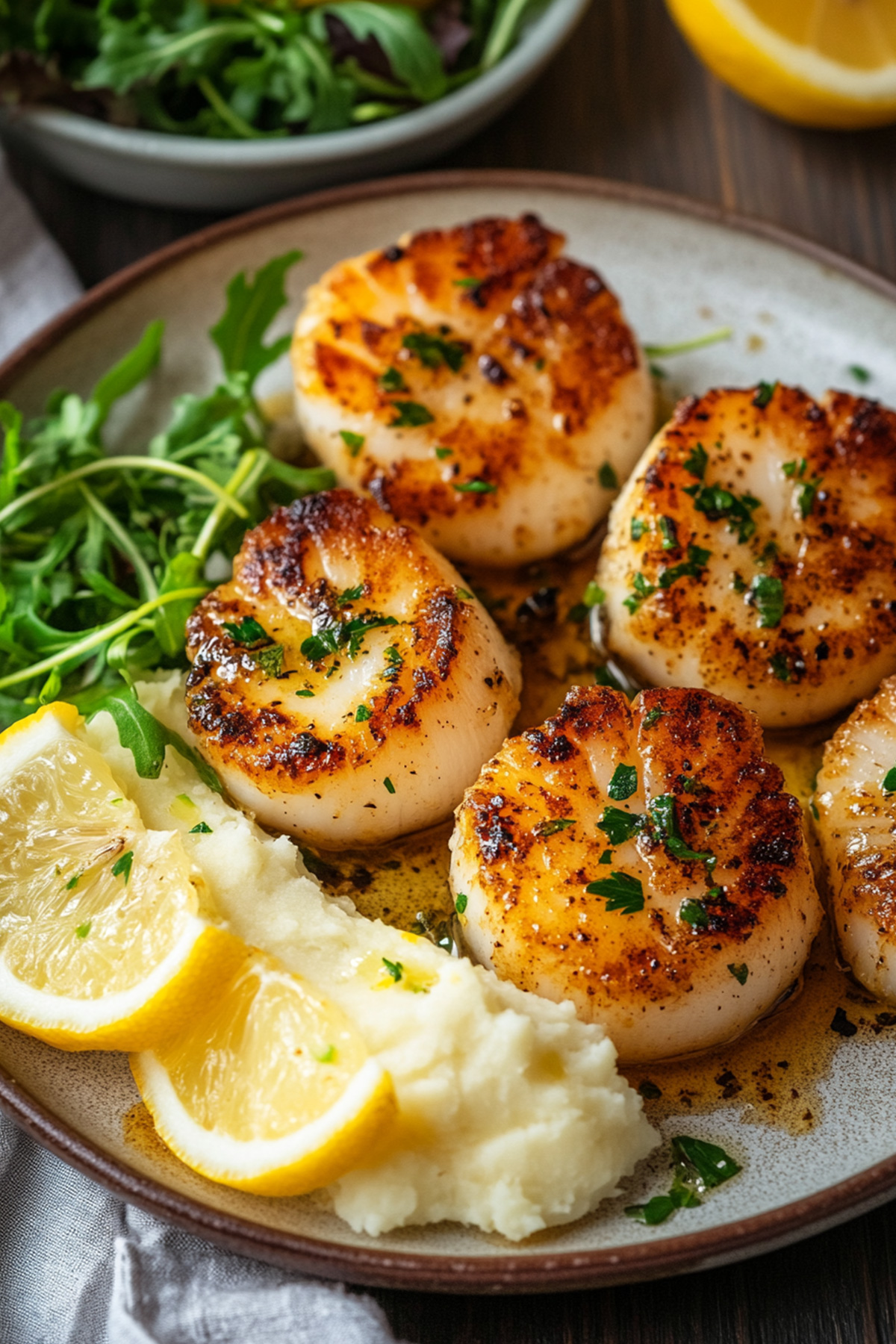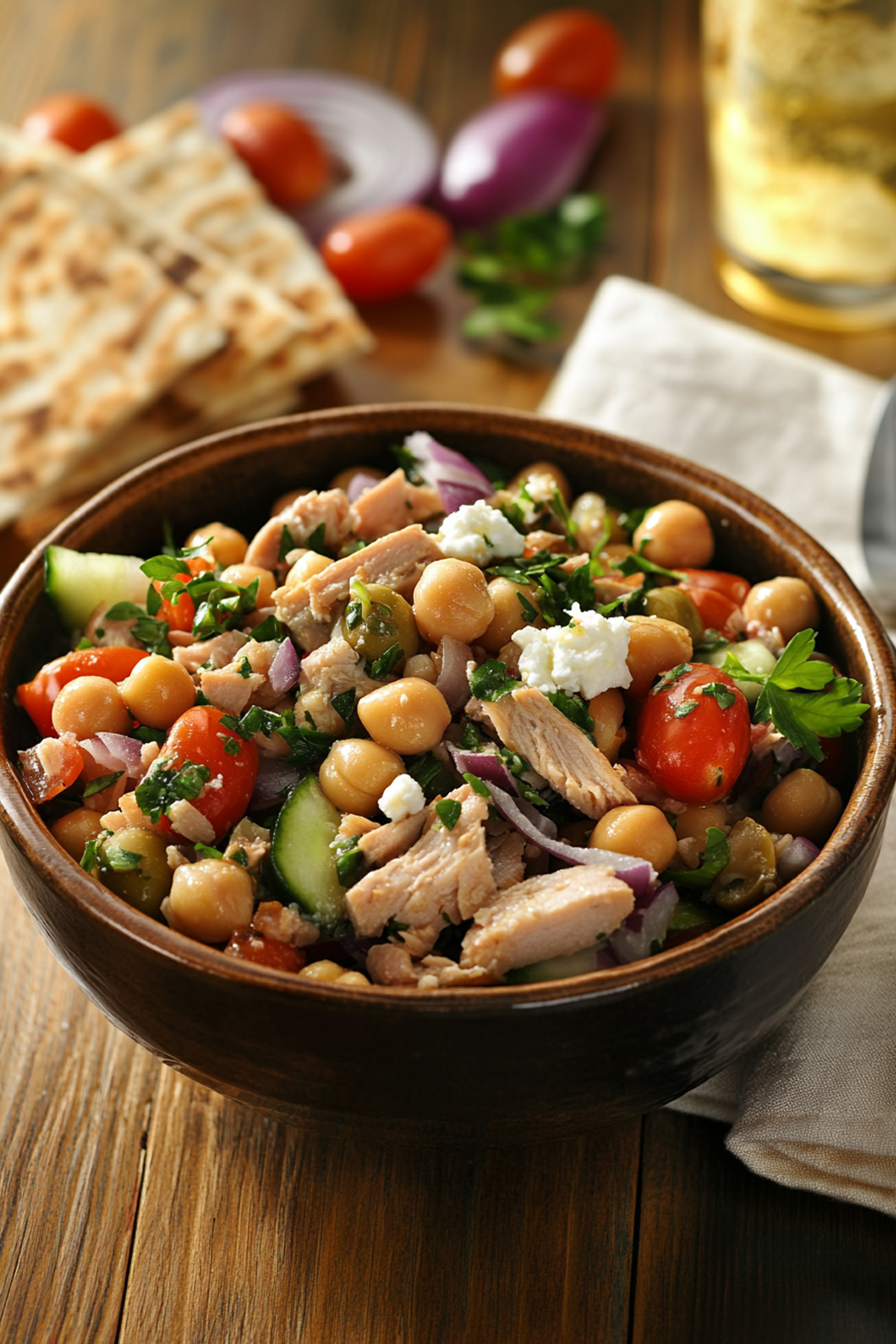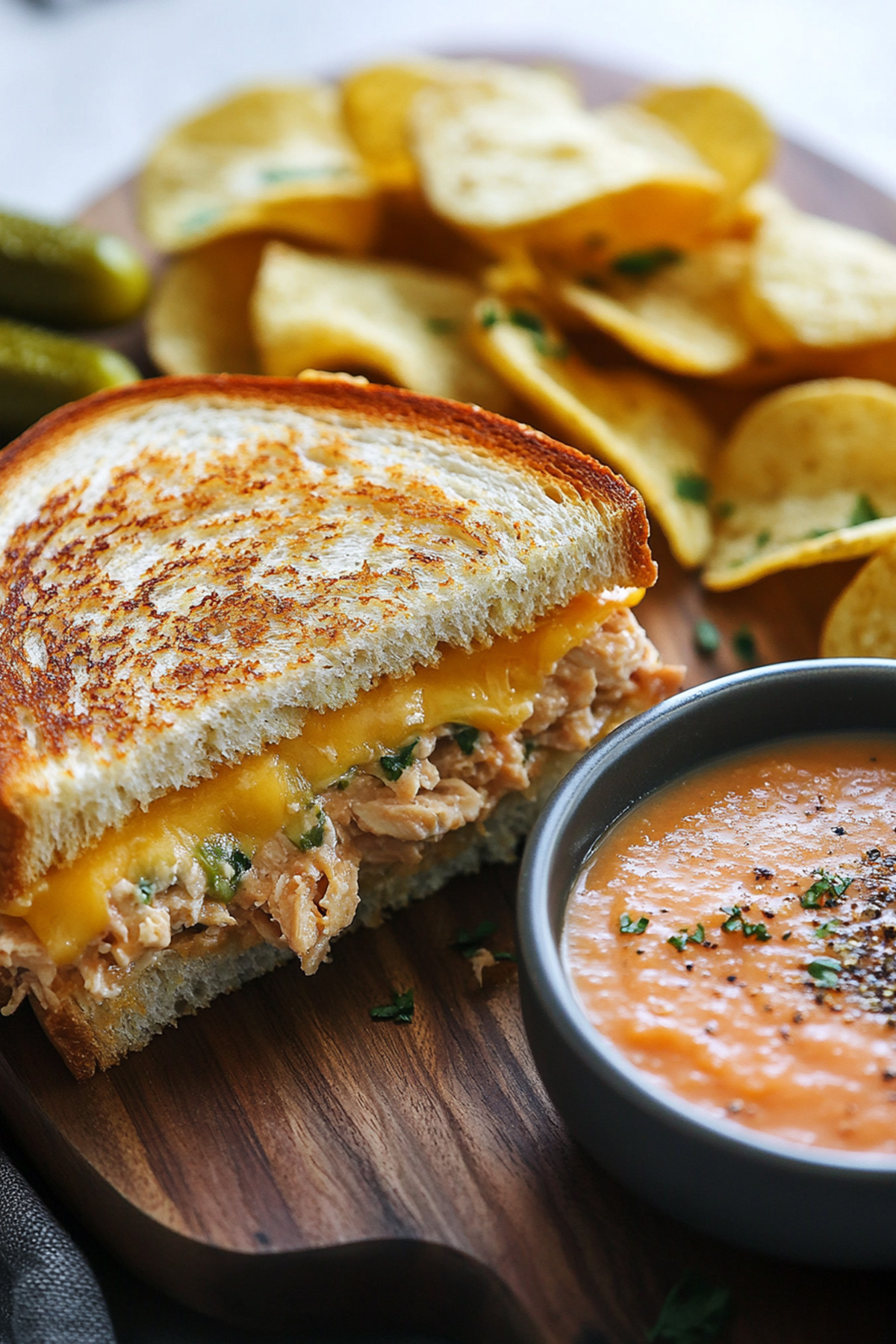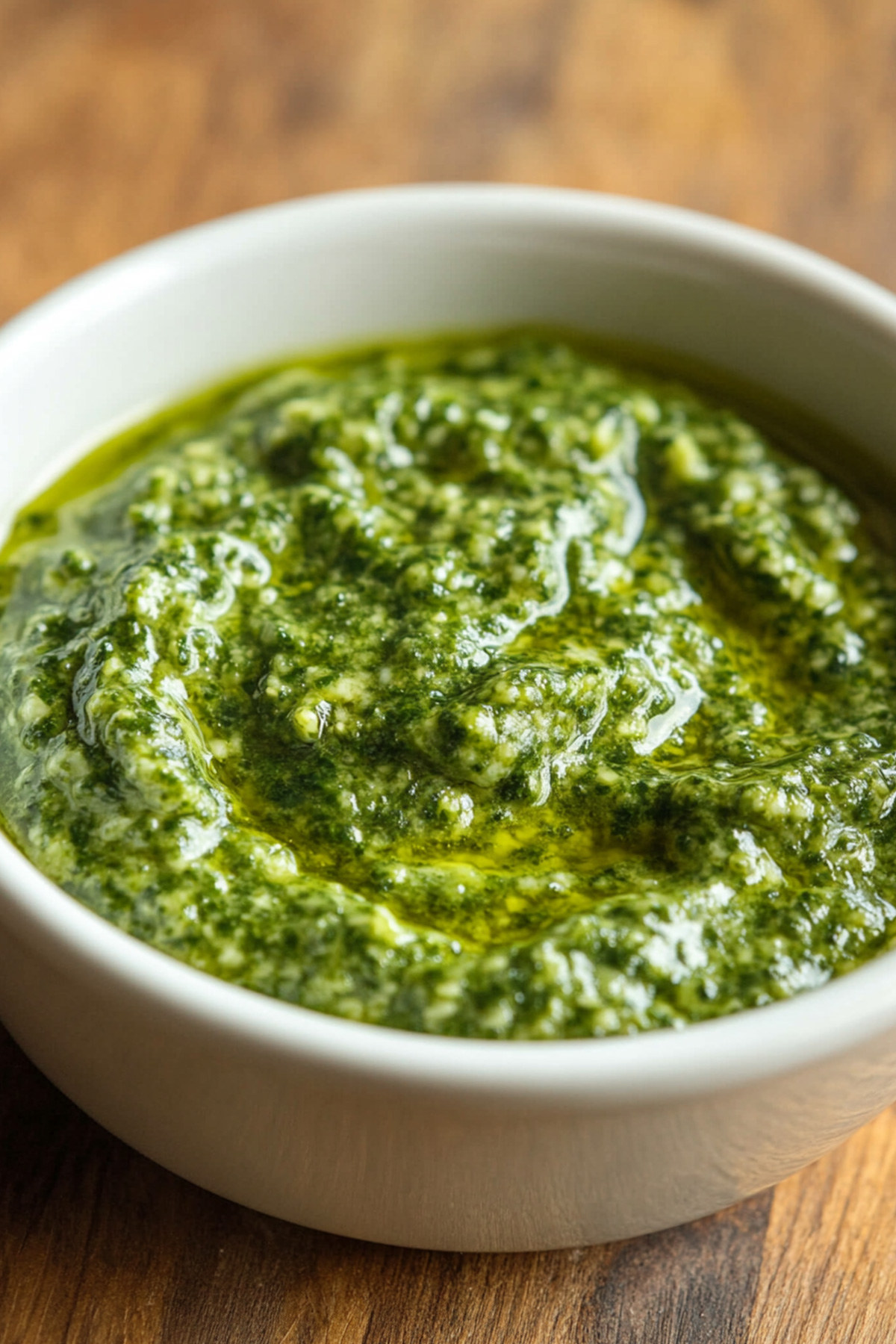Disclosure: As an Amazon Associate and participant in other affiliate programs, we earn from qualifying purchases. We only recommend products we believe will provide value to our readers.
If you’re looking to elevate your dinner game, look no further than baked rock fish. This mild, flaky seafood is a versatile choice for home cooks and seafood aficionados alike. With its tender texture and delicate flavor, rockfish lends itself perfectly to baking, allowing the fish to soak up mouthwatering flavors from herbs, spices, and marinades.
Beyond its culinary appeal, rockfish is also a nutritional powerhouse. Rich in protein and omega-3 fatty acids while being low in calories, it’s an excellent addition to any healthy diet. When baked, not only does it become beautifully tender, but this cooking method amplifies the natural taste of the fish—making every bite as satisfying as it is nourishing.
In this article, we’ll guide you step-by-step on how to create perfect baked rock fish at home. From selecting fresh fillets to mastering seasoning techniques and pairing delicious sides, you’ll have all the tools needed for an impressive dish that’s sure to delight family and friends at your next dinner party. Let’s dive into the wonderful world of baked rock fish!
Table of Contents
What is Rock Fish?
Rockfish, a term that encompasses various species of fish within the genus Sebastes, is well-loved for its mild flavor and flaky texture. These fish come in many varieties, including Pacific rockfish, striped bass, and red snapper—each bringing its own character to the plate. While the name may suggest ruggedness, rockfish are actually prized for their delicacy. They thrive in underwater rocky terrains where they can camouflage themselves from predators, which contributes to their unique taste profile; it’s a balance of sweetness with a subtle ocean brininess that makes them irresistible.
The popularity of rockfish in culinary applications—particularly in baking—is often attributed to its ability to hold up against heat without becoming dry or tough. When you bake rock fish, it does not simply cook; it transforms into something greater. The gentle cooking process allows flavors from marinades or seasoning to penetrate while preserving moisture inside the fillet. This also means less fuss than grilling or frying; you can pop your seasoned fish into the oven and let it do its thing while you focus on side dishes or entertaining guests.
Rockfish are commonly found along the West Coast of North America—from Alaska down through California—and are harvested primarily through sustainable fishing practices. Fishermen often utilize trawling techniques that ensure minimal impact on other marine life while still providing delicious catch for local markets and restaurants. Many enjoy seeking out fresh fish at farmer’s markets or trusted seafood vendors, ensuring they support sustainable sourcing efforts without sacrificing quality. With newly adopted regulations aimed at preserving rockfish populations, home cooks can feel good knowing their baked rock fish comes from responsible sources.
In summary, rock fish exemplify both diversity and versatility in the kitchen. Whether you’re preparing a simple baked rock fish dinner for family or impressing guests at a dinner party with sophisticated flavors and textures, incorporating this delightful species will elevate any meal occasion while reminding us of the beautiful oceans from which they come.
Why Bake Rock Fish?
Baking rockfish is one of the best ways to prepare this delicious seafood, offering unique benefits that elevate your dining experience. One of the primary advantages of baking is its simplicity; you can season, place it in the oven, and forget about it for a while—perfect for busy weeknights or elegant dinner parties alike. Unlike frying or grilling, which can add excess fat and alter the natural flavors, baking enhances rockfish’s inherent taste without overwhelming it. The gentle heat of the oven allows for even cooking, ensuring that each bite is moist and tender.
When you bake rockfish, you’re also preserving its delicate texture. The fish has a beautiful flaky consistency that shines through when cooked at the right temperature. Baking provides sufficient warmth to cook the fish evenly from all sides while locking in moisture, which prevents dryness—a common pitfall with quicker cooking methods like pan-searing or deep-frying. For example, imagine biting into perfectly baked rockfish: each forkful separates effortlessly yet maintains a juicy mouthfeel that’s both satisfying and flavorful.
Health-wise, baked rockfish checks multiple boxes for those who are health-conscious. This fish is low in calories but rich in essential nutrients such as protein and Omega-3 fatty acids, making it an excellent choice for a heart-healthy diet. Incorporating baked rockfish into your meals can support cardiovascular health by promoting good cholesterol levels and reducing inflammation—benefits that other cooking methods may compromise through added oils or fats. Plus, pairing your dish with fresh vegetables accentuates not only flavor but nutritional intake as well.
In sum, choosing to bake rockfish allows you to enjoy a delicious meal while keeping it healthy and uncomplicated. With its delightful texture preserved and its flavor enhanced through baking, this method stands out among others as a superior choice for preparing beloved seafood at home. Whether you’re impressing guests at a dinner party or treating yourself on a quiet night in, baked rockfish promises satisfaction on both fronts: your palate will rejoice alongside your health goals.
Read also: How to Make Breaded and Baked Fish With Haddock

Baked Rock Fish
- Total Time: 30 minutes
Ingredients
Baking rock fish is a simple yet flavorful experience that starts with selecting the right ingredients. At its core, the process requires just a few key components to ensure your baked rock fish turns out succulent and delicious. Here’s what you need:
- Fresh Rock Fish: The star of the dish, ideally filleted.
- Olive Oil or Butter: For drizzling over the fish to enhance flavor and moisture.
- Lemon Juice: Freshly squeezed lends brightness and balances the richness.
- Salt and Pepper: Essential for seasoning; adjust according to taste.
While these core ingredients provide a solid foundation for your baked rock fish, optional enhancements can elevate this dish from simple to spectacular! Consider adding minced garlic for an aromatic depth, or fresh herbs like parsley or dill for a burst of freshness. A sprinkle of paprika or cayenne can introduce a delightful warmth, while capers add a tangy punch that beautifully complements the fish’s natural flavors.
Furthermore, feel free to experiment with different citrus infusions—lime zest can replace lemon for an intriguing twist. Also, consider tossing in some cherry tomatoes or olives into the baking tray; they’ll roast alongside your filet, creating a vibrant side that’s packed with additional flavor. By playing around with these optional ingredients, you’ll not only personalize your baked rock fish but also impress your dinner guests with unique flavor profiles!
Instructions
- Step 1: Baking rock fish is a straightforward yet rewarding culinary endeavor that combines flavor with ease. To get started, preheat your oven to 400°F (200°C). The high heat is essential for sealing in moisture and ensuring the perfect texture of your fish. Begin by preparing a baking dish; lightly grease it or line it with parchment paper to prevent sticking. This simple step sets the stage for a hassle-free cleanup later.
- Step 2: Next, season your rockfish fillet generously. A basic mixture can include olive oil, salt, pepper, and lemon juice for a zesty kick. However, this is your opportunity to get creative! Consider marinating the fish in herbs like dill or tarragon for at least 30 minutes prior to baking— this not only infuses it with flavor but also tenderizes the meat. Place the seasoned fillet skin-side down onto the prepared baking dish and add accompanying ingredients if you desire; thin slices of tomatoes or asparagus complement rockfish beautifully.
- Step 3: Once your fish is ready in the oven, bake for about 15-20 minutes depending on thickness—generally, fish should be cooked for about 10 minutes per inch of thickness. Keep an eye on the color and texture; when the flesh becomes opaque and flakes easily with a fork, it’s done! For an extra touch, consider broiling it for an additional minute at the end to achieve a light golden crisp on top—the perfect balancing act between moistness and crunch.
- Step 4: Finally, let your baked rock fish rest for just a couple of minutes before serving; this allows flavors to settle nicely while out of direct heat. Serve immediately with fresh herbs sprinkled on top for garnish and enjoy the delightful aroma wafting from your kitchen! Whether you’re hosting friends or simply indulging in an enjoyable weeknight meal, perfectly baked rock fish could swiftly become one of your go-to recipes.
- Prep Time: 10 minutes
- Cook Time: 20 minutes
- Category: Seafood
- Method: Baking
Best Side Dishes to Serve with Baked Rock Fish
When it comes to elevating your baked rock fish dinner, choosing the right side dishes can make all the difference. One great option is a light, refreshing citrus salad featuring kale, oranges, and avocados. The bright acidity of the oranges provides a delightful contrast to the mild flavor of the fish, while the creamy texture of avocado adds richness that complements the lean protein. Tossing in some toasted nuts or seeds not only provides an appealing crunch but also packs in added nutrients, making this salad a healthy sidekick for your main dish.
Another fantastic choice is roasted seasonal vegetables such as asparagus, zucchini, and bell peppers. These vegetables can be seasoned simply with olive oil, salt, and pepper before being roasted until tender and slightly caramelized. This method enhances their natural sweetness and adds depth that pairs beautifully with baked rock fish. Not only does this combination create a visually stunning plate, but it also delivers an array of vitamins and minerals alongside your protein-rich fish.
For those who crave something heartier, a wild rice pilaf could steal the show. Its nutty flavor and chewy texture provide a lovely counterpoint to the delicate flakiness of baked rock fish. You can throw in some sautéed mushrooms or dried cranberries for an extra layer of flavor—after all, variety is key when creating a well-balanced meal! Plus, wild rice is rich in fiber and antioxidants, making it nutrition-packed comfort food ideal for any dinner gathering.
Lastly, consider serving up garlic mashed potatoes or even cauliflower mash for a creamier touch. The buttery goodness from mashed potatoes pairs perfectly with baked rock fish by adding warmth to each bite—a classic culinary love affair that never goes out of style. Cauliflower mash offers an excellent low-carb alternative without sacrificing taste or satisfaction; both choices invite diners to savor every morsel on their plates while complementing the flavors inherent in our star dish: deliciously flaky baked rock fish!
You may like: Baked Black Cod Fish Recipe
Tips for Perfectly Baked Rock Fish Every Time
When it comes to baking rock fish, timing is everything. Overcooking can lead to a dry, lackluster texture while undercooking might leave you with a less-than-ideal meal. To avoid those pitfalls, start by checking the thickness of your fish fillet. A general guideline is to cook rock fish at 450°F for about 10 minutes per inch of thickness. If your fillet is particularly thick or thin, adjust accordingly—err on the side of caution and begin checking for doneness a couple of minutes early. The fish should flake easily with a fork but remain moist and tender.
To ensure your dish turns out flavorful and succulent, consider marinating your rock fish before baking. A simple marinade made from olive oil, lemon juice, garlic, and fresh herbs not only enhances flavor but also helps keep the moisture locked in during cooking. Additionally, covering the fillet with parchment paper or aluminum foil while baking can create steaming effect that keeps the fish juicy—it’s like wrapping it in its own cozy blanket! Remember to uncover it toward the end of cooking time if you’re looking for a slight browning on top.
Another pro tip involves using a meat thermometer—yes, even for fish! Aim for an internal temperature of 145°F for perfectly cooked rock fish without any guesswork. This helps accommodate different cuts and ensures that no matter what size or thickness you’ve chosen, you’re achieving that ideal texture every time. Just remember: if it’s slightly translucent in the center and flakes well when tested—it’s still got progress to make! Covering up issues like dryness or rubbery textures becomes easy when armed with these tricks.
Lastly, don’t forget about resting time after baking! Letting the rock fish sit for about five minutes allows the juices to redistribute back into the meat rather than spilling out onto your plate as you cut into it right away. Patience pays off here; soon enough you’ll be enjoying perfectly baked rock fish that’s guaranteed to impress any dinner party guest or satisfy your seafood cravings at home!
Variations of Baked Rock Fish Recipes
Baked rock fish is a versatile dish that can easily adapt to a variety of flavors and culinary styles. One popular variation is the classic lemon garlic baked rock fish. To create this zesty dish, simply marinate your rock fish fillets in olive oil, minced garlic, fresh lemon juice, and zest for about 30 minutes before baking. The bright acidity of the lemon not only enhances the natural sweetness of the fish but also helps keep it moist while cooking. This preparation pairs wonderfully with roasted asparagus or a light arugula salad as its refreshing accompaniment.
If you’re looking for something with a bit more heat, consider preparing spicy baked rock fish. Incorporate ingredients such as crushed red pepper flakes, smoked paprika, and cayenne into your seasoning mix for added kick. For an extra layer of flavor, experiment by adding sliced jalapeño or a drizzle of sriracha on top just before serving. The spiciness elevates the fish’s delicate flavors and makes it a showstopper at dinner parties—especially when served alongside coconut rice or grilled corn on the cob to help cool things down.
For those who enjoy Mediterranean cuisine, try infusing your baked rock fish with herbs like oregano and dill. Pairing these herbs with olives and tomatoes creates a fragrant dish reminiscent of coastal dining in Greece or Italy. Simply toss chopped vegetables with olive oil, sprinkle them around your seasoned fish fillets in the baking dish, and let them roast together for a delightful one-pan meal that’s packed full of flavor. Adjusting these recipes to suit dietary restrictions can be simple; using gluten-free breadcrumbs instead of traditional ones or opting out entirely by focusing on spices will allow anyone to savor baked rock fish without compromising taste.
Lastly, meal prep enthusiasts can easily modify their baked rock fish recipe to align with low-carb diets by eliminating high-carb sides like potatoes or bread. Instead, supplement your main course with nutrient-rich options such as sautéed spinach or cauliflower rice for added texture without hefty carb counts. No matter which variation you choose to explore today, expressing creativity through different spices and side dishes ensures there’s always something new especially appealing about homemade baked rock fish!
How to Choose Fresh Rock Fish for Baking
Selecting fresh rock fish is essential for ensuring a delicious and satisfying meal. When you’re at the market, start by examining the fish’s appearance. Fresh rockfish should have bright, clear eyes; dull or sunken eyes can be a strong indicator of age. Additionally, look for shiny skin that reflects light—a good sign that it was recently caught. The flesh should feel firm to the touch and spring back when pressed gently. If you notice any discoloration or an off-putting smell, it’s best to move on to another option.
Another key factor in choosing fresh rockfish is checking its gills. They should be bright red or pinkish—this vibrant color signals freshness—while brown or faded gills could indicate that the fish has been sitting around for too long. Always trust your senses: ask questions and don’t hesitate to inquire about when the fish was caught and how it’s been stored. Many markets now provide sustainability certifications that inform you not only about freshness but also about ethical sourcing practices.
Once you’ve selected your fresh rockfish, proper storage is critical before cooking it. Ideally, store it in the coldest part of your refrigerator, preferably on ice in a shallow pan covered with plastic wrap. This method helps maintain its chill while ensuring moisture does not accumulate. Fresh rockfish should ideally be cooked within two days of purchase for optimum taste, but if you need to keep it longer, consider freezing it instead—just make sure to do so in an airtight container or vacuum-sealed bag to prevent freezer burn.
By prioritizing freshness from selection through storage, you’ll set yourself up for baking success with your rockfish dish. Not only will this enhance the natural flavors during cooking, but it will also contribute significant nutritional benefits as well!
Health Benefits of Eating Baked Rock Fish
Baked rock fish is a powerhouse in the world of seafood, offering a deliciously healthy option for dinner. A typical serving (about 3.5 ounces) contains approximately 120 calories, packed with around 25 grams of protein and just one to two grams of fat, depending on the specific type of rockfish you choose. This stellar nutritional profile makes it an excellent choice for anyone looking to maintain or build muscle while managing their calorie intake. Plus, unlike heavier fishes that might leave you feeling sluggish, rock fish is light yet satisfying—perfect for any meal. [source]
Incorporating baked rock fish into your diet comes with various health benefits that extend beyond its impressive macronutrient values. It’s an excellent source of essential omega-3 fatty acids, particularly EPA and DHA, known for their heart-healthy properties. Regular consumption can help lower blood pressure, reduce triglycerides, and even improve overall brain function. With rising health issues related to cardiac problems and cognitive decline, adding this delightful fish to your regular menu could be a step toward better well-being. [source]
When comparing baked rock fish to other types of fish—like salmon or mackerel—the benefits remain appealing. While salmon is indeed rich in omega-3s, it also has significantly more calories and fats per serving due to its higher oil content. On the other hand, cod offers lean protein but lacks some of the beneficial omega-3 levels found in rock fish. With its perfect fusion of low calories and high nutrient density, baked rock fish serves as an ideal choice that marries flavor with nutrition beautifully.
So why not consider indulging in this nutritious delight? Whether you are preparing for a romantic dinner or meal prepping for a busy week ahead, baked rock fish provides elegance on your plate without compromising your health goals. Embrace culinary creativity as you explore different recipes—a simple baked dish can turn into countless flavorful variations while keeping nutrition at the forefront!
Common Mistakes to Avoid When Baking Rock Fish
Baking rock fish can be a delightful culinary experience, but it’s easy to make some common mistakes that could ruin your dish. One of the most frequent pitfalls is overcooking the fish. Rock fish is naturally delicate and dries out quickly if left in the oven for too long. A good rule of thumb is to check for doneness at around 12-15 minutes at 400°F, depending on the thickness of the fillets. To help avoid this misstep, use an instant-read thermometer; when cooked correctly, the internal temperature should reach about 145°F for perfectly flaky yet moist meat.
Another mistake often made by home cooks is **under-seasoning**. Given its mild flavor profile, rock fish can benefit immensely from a well-rounded seasoning blend. Many novice bakers simply sprinkle salt and pepper before placing their fish in the oven; while that’s a start, it’s far from sufficient! Don’t hesitate to experiment with herbs like dill or rosemary and spices such as paprika or garlic powder to elevate your dish’s flavor profile. Before baking, consider marinating or brining your fish for added taste—just remember not to go overboard with salt!
Additionally, many people overlook preparing their baking dish properly. Using a non-stick pan or lining it with parchment paper can prevent sticking and ensure easier cleanup later on. If you’re using skin-on fillets, positioning them skin-side down will also help retain moisture during cooking—this way, you achieve that coveted melt-in-your-mouth texture without any fuss!
Lastly, keep an eye on your cooking time relative to the thickness of your fish fillets. Thicker cuts may require just a few more minutes in the oven compared to thinner ones. Adjust accordingly while checking frequently towards the end of cooking to escape both undercooked and overdone scenarios. With attention to these details and a little practice, you’ll have no trouble creating beautifully baked rock fish that will impress everyone at dinner!
Time to Get Cooking!
Now that you have all the tools and tips for making perfect baked rock fish at home, it’s time to put them into action. Remember to gather your ingredients, prepare your fish, and follow the step-by-step baking instructions carefully. With a few key tips on serving suggestions and flavor variations, you’ll be ready to impress your family or guests with this delicious seafood dish.
Don’t hesitate to get creative! Experiment with different spices, herbs, or sides that appeal to your palate. Whether it’s a zesty lemon-garlic twist or a spicy kick, the variations are endless. So roll up your sleeves and dive into the wonderful world of baked rock fish—your taste buds will thank you!

